Embroidering a tea towel is a delightful and versatile craft that infuses character and charm into everyday kitchen linens.
This time-honored art form allows you to transform a simple, utilitarian tea towel into a canvas for your creativity.
The process involves adding intricate designs, patterns, or personal touches through hand-stitched embroidery.
Whether you’re a novice looking to explore a new hobby or an experienced embroiderer seeking a fresh project, this guide will walk you through the steps of adorning a tea towel with your chosen designs.
From selecting materials and patterns to executing various embroidery techniques, this artistic journey promises to yield not only beautiful and functional kitchen accessories but also a sense of accomplishment and creative expression.
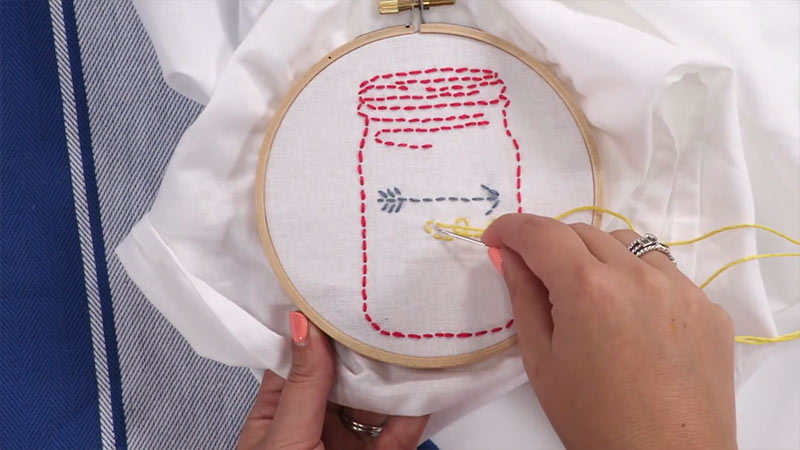
How Do You Embroider A Tea Towel?
Embroidering a tea towel is a delightful and creative way to add a personal touch to your kitchen decor or create a thoughtful handmade gift.
Embroidery is a versatile craft that allows you to express your creativity through various stitches, patterns, and colors.
Here’s a step-by-step guide on how to embroider a tea towel:
Materials You’ll Need:
- Tea towel
- Embroidery hoop
- Embroidery floss
- Embroidery needles
- Pattern or design
Steps to Embroider a Tea Towel:
Step 1: Gather Your Materials
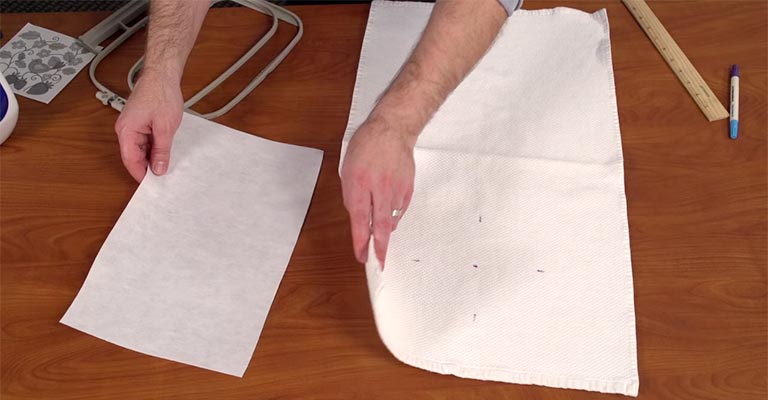
Begin by collecting all the necessary supplies you’ll need for your embroidery project.
These include a plain tea towel made of natural fabric (such as cotton or linen), an embroidery hoop, embroidery floss in your chosen colors, embroidery needles, and the design or pattern you want to embroider. Make sure your tea towel is clean and wrinkle-free before you start.
Step 2: Prepare Your Tea Towel
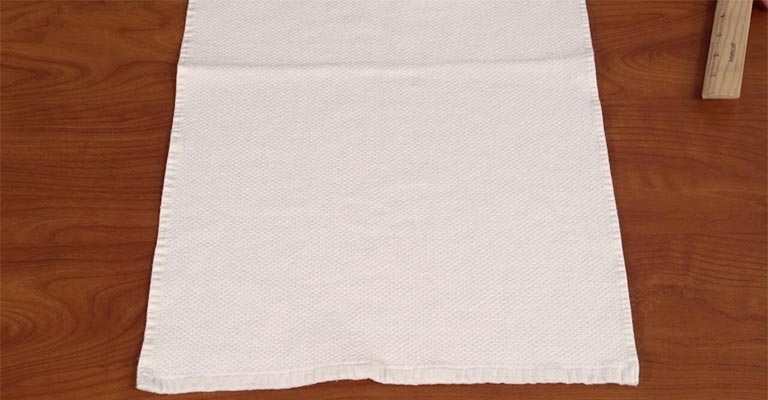
Before you begin embroidering, it’s essential to prepare the tea towel. First, wash and thoroughly dry it to ensure it’s clean.
Then, use an iron to carefully press the fabric, removing any wrinkles or creases. This step ensures a smooth and even surface for your embroidery work.
Step 3: Choose Your Design
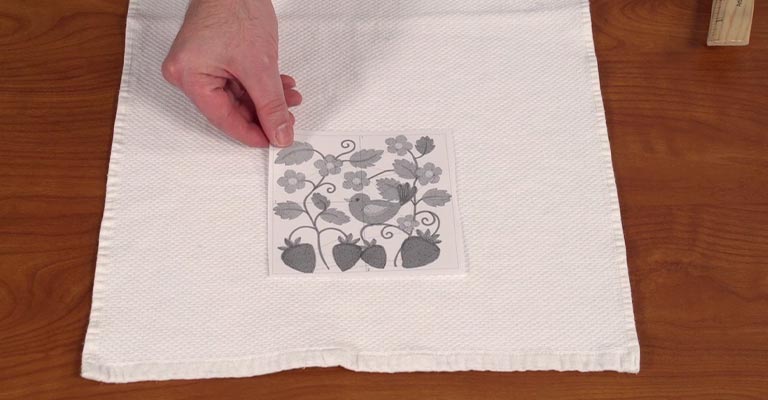
Select the design or pattern you want to embroider onto the tea towel. This design can be something you’ve created yourself or one you’ve found in embroidery books or online resources.
Decide where on the tea towel you’d like to place the design, keeping in mind the towel’s dimensions and your preferences.
Step 4: Secure the Fabric in the Embroidery Hoop
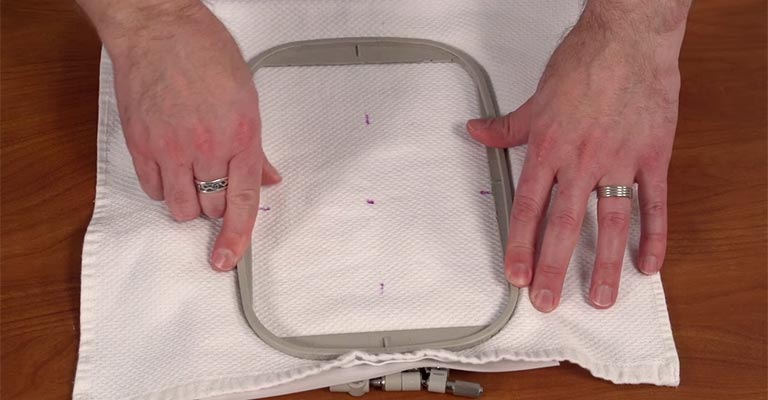
To make the embroidery process more manageable, place your tea towel in the embroidery hoop.
Position the design in the center of the hoop and tighten the hoop’s screw or clamp to hold the fabric taut but not overly stretched. This tension will help you achieve clean and even stitches.
Step 5: Thread Your Needle
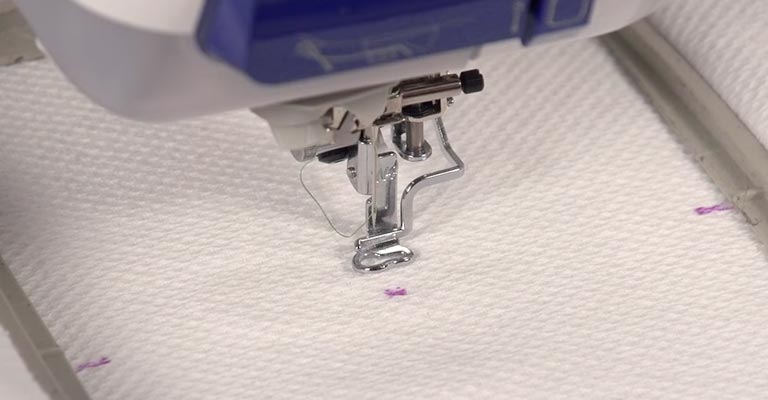
Select the appropriate color of embroidery floss for your design and cut a length of thread, usually about 18-24 inches.
Thread the embroidery floss through the eye of the embroidery needle. You can choose to use all six strands or separate them according to your design’s thickness requirements.
Step 6: Start Stitching
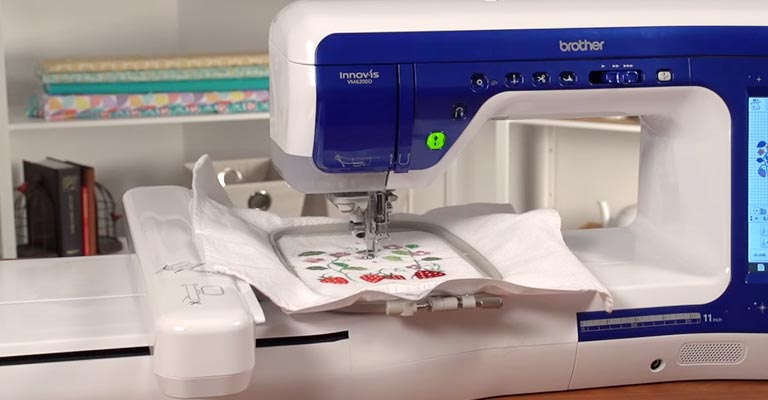
Begin stitching your chosen design by following your pattern. If you’re new to embroidery, you might want to start with a simple stitch, such as the backstitch or running stitch.
More experienced embroiderers can explore more intricate stitches like the satin stitch, French knots, or chain stitch.
As you work, start in the center of your design and move outward, paying attention to detail and accuracy.
Step 7: Finish Your Stitches
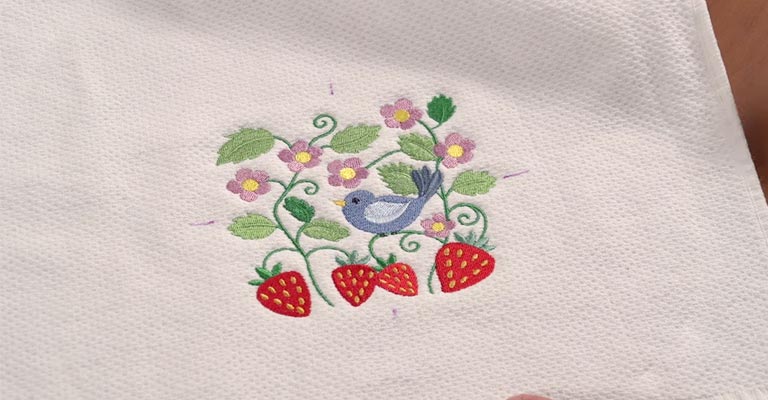
Once you’ve completed a section or a color in your design, it’s important to secure the thread. Tie off the thread on the backside of the tea towel by making a small loop and passing the needle through it before pulling it tight. Snip any excess thread to keep your work tidy.
Step 8: Continue Stitching
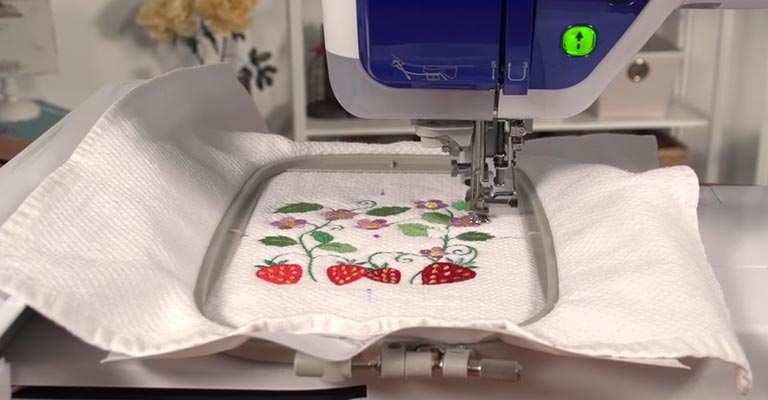
Keep stitching, section by section, until you’ve embroidered the entire design. Be patient and take your time, as the embroidery can be a slow and meticulous process.
Step 9: Final Touches
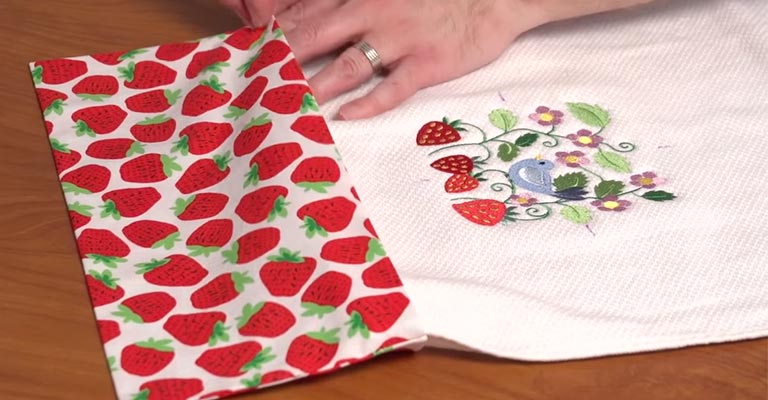
When you’ve finished embroidering your design, remove the tea towel from the embroidery hoop. Trim any excess fabric around the design to tidy up your work and ensure that your design stands out.
Step 10: Care Instructions
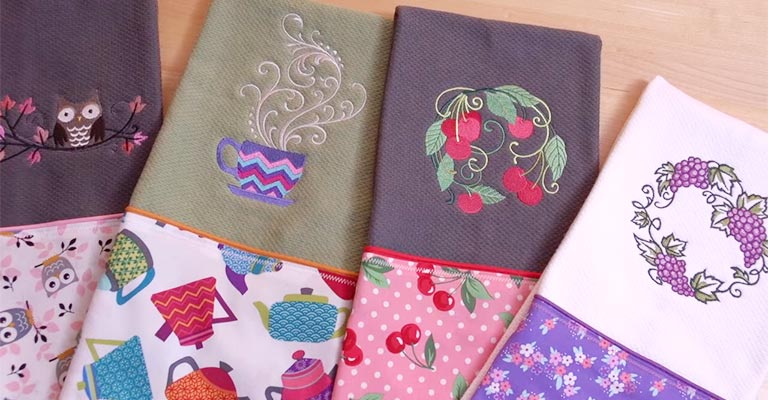
To maintain the quality of your embroidered tea towel, take care when washing it. Turn the towel inside out and use a mild detergent on a gentle cycle to protect the embroidery. Avoid using bleach or harsh chemicals, as they may damage the embroidered threads.
How Do You Embroider a Tea Towel by Hand?
Embroidering a tea towel by hand is a creative and rewarding craft that allows you to add a personal touch to your kitchen decor or create thoughtful handmade gifts.
Hand embroidery is a versatile art form that lets you express your creativity through various stitches, colors, and designs.
Here’s a step-by-step guide on how to hand embroider tea towels:
Materials You’ll Need:
- Tea Towel
- Embroidery Hoop
- Embroidery Floss
- Embroidery Needles
- Design or Pattern
Steps to Hand Embroider a Tea Towel:
Step 1: Prepare Your Tea Towel
Start by washing and ironing the tea towel to make it clean and smooth. This step ensures that your fabric is ready for embroidery.
Step 2: Choose Your Design
Select the design or pattern you want to embroider on your tea towel. Decide where you’d like it to be placed.
You can transfer your chosen design onto the fabric using an embroidery transfer pen, water-soluble fabric marker, or a lightbox.
Step 3: Secure the Fabric in the Hoop
Place your tea towel in the embroidery hoop, making sure the chosen design is centered. Tighten the hoop to keep the fabric taut, allowing for easier and more precise stitching.
Step 4: Thread Your Needle
Cut a length of embroidery floss (usually about 18-24 inches) and thread it through the needle’s eye. You can use all six strands or separate them as needed for your design.
Step 5: Start Stitching
Begin your embroidery with a simple stitch like the backstitch or running stitch if you’re new to embroidery.
For those with more experience, you can explore more complex stitches such as the satin stitch, French knots, or chain stitch.
Follow your design and work from the center outward, paying attention to detail and accuracy.
Step 6: Finish Your Stitches
As you complete each color or section of your design, tie off the thread on the back of the tea towel to secure it in place. Trim any excess thread to maintain a neat appearance.
Step 7: Continue Stitching
Continue the embroidery process until you’ve covered your entire design with the chosen stitches. Take your time and enjoy the creative process.
Step 8: Final Touches
Once you’ve finished embroidering, remove the tea towel from the hoop and trim any excess fabric around the design to tidy up your work and make the design stand out.
Step 9: Care Instructions
To ensure the longevity of your embroidered tea towel, wash it with care. Turn the towel inside out and use a mild detergent on a gentle cycle to avoid damaging the embroidery. Avoid using bleach or harsh chemicals as they can harm the embroidered threads.
Tea Towel Embroidery Patterns Free
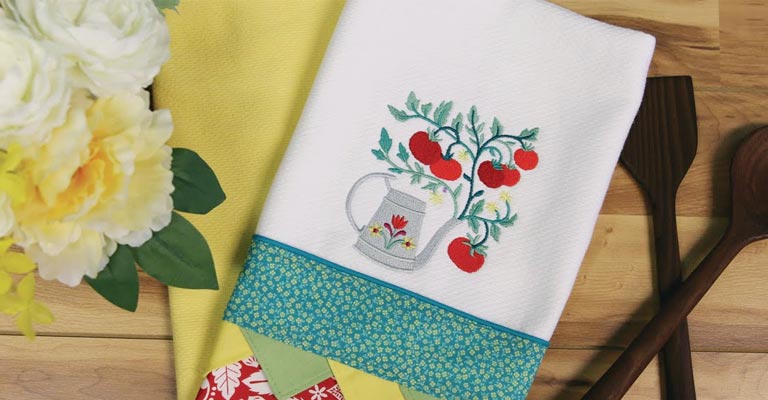
Tea towel embroidery patterns are a wonderful way to infuse personality, style, and creativity into your kitchen or to create unique and heartfelt gifts. These patterns offer a wide range of designs and themes to suit various tastes and occasions.
Here are some free tea towel embroidery patterns:
Floral Embroidery Patterns
Floral motifs are timeless and popular for tea towel embroidery. You can choose from an array of flowers such as roses, daisies, or sunflowers to create a charming, garden-inspired design. Floral patterns bring a touch of nature and elegance to your kitchen.
Seasonal Themes
Seasonal patterns are great for celebrating holidays and special occasions. For example, you can embroider snowflakes and pine trees for winter, or pumpkins and leaves for autumn. This allows you to update your kitchen decor throughout the year.
Kitchen and Food-Themed Designs
Tea towels are a staple in the kitchen, making food and kitchen-themed patterns particularly fitting. Consider embroidering images of fruits, vegetables, utensils, or whimsical culinary scenes to add a touch of culinary charm.
Monograms and Initials
Personalized tea towels make for thoughtful gifts. You can embroider initials, monograms, or names in various fonts and styles. Monogrammed tea towels add an elegant and customized touch to any kitchen.
Geometric Patterns
Geometric designs, like chevrons, stripes, or geometric shapes, can provide a modern and minimalist aesthetic. These patterns can add a contemporary flair to your tea towels.
Vintage and Retro Styles
Vintage and retro patterns offer a touch of nostalgia and evoke a sense of classic charm. Consider embroidering retro kitchen appliances, mid-century modern designs, or vintage advertisements.
Whimsical and Fun Patterns
For a touch of whimsy, opt for playful patterns that feature animals, quirky characters, or fun phrases. These patterns can add a lighthearted and cheerful element to your kitchen decor.
Inspirational Quotes
Embroider your favorite quotes or uplifting messages on your tea towels. These patterns serve as daily reminders and add a positive, motivating element to your kitchen.
Abstract and Artistic Designs
Express your artistic side by choosing abstract or artistic embroidery patterns. These designs may not represent any specific object but are often colorful and visually striking.
Cross-Stitch Patterns
Cross-stitch patterns, known for their orderly and repetitive style, create a unique and textured look on tea towels. They offer a more traditional and rustic charm.
Hand Embroidery Tracing Designs
Hand embroidery tracing designs encompass a wide array of beautiful and popular patterns that you can trace onto fabric for your embroidery projects. These designs can vary from classic and timeless to more contemporary and trendy.
Here are some popular hand embroidery tracing design ideas:
Floral Motifs
Flowers are a perennial favorite in embroidery. Roses, daisies, sunflowers, and tulips are just a few of the floral options. You can create intricate bouquets, single blooms, or entire garden scenes.
Animals
Animal designs offer endless possibilities. Consider tracing cute animals like birds, butterflies, cats, dogs, or more elaborate wildlife like deer, elephants, or peacocks.
Botanicals
Beyond flowers, botanical motifs such as leaves, branches, and herbs are popular choices. These designs can be arranged to create elegant borders, frames, or overall patterns.
Alphabets and Monograms
Personalize your embroidery projects with traced alphabet and monogram patterns. You can use different fonts and styles to add initials or names to your creations.
Holidays and Seasonal Designs
Celebrate holidays and the changing seasons with themed patterns. Think of snowflakes and snowmen for winter, or pumpkins and witches for Halloween.
Geometric Shapes
Create contemporary and abstract designs with geometric shapes. Circles, squares, triangles, and other geometric patterns offer a modern and minimalist aesthetic.
Inspirational Quotes
Trace your favorite quotes or inspirational phrases onto fabric. Embroidering these words can be a daily reminder of positivity and motivation.
Vintage and Retro Designs
Transport your embroidery projects back in time with vintage and retro designs. This can include old advertisements, mid-century modern patterns, or vintage kitchen and home decor motifs.
Landscapes and Scenery
Capture landscapes or scenery, such as mountains, seascapes, or city skylines, in your embroidery. These designs can be intricate and beautifully detailed.
Cultural and Ethnic Motifs
Explore the rich diversity of world cultures by tracing ethnic patterns and motifs. Whether it’s tribal designs, intricate Indian patterns, or traditional Japanese motifs, these can add a unique and artistic element to your work.
Whimsical and Fantasy Designs
Let your imagination run wild with whimsical and fantasy themes. Create scenes with fairies, dragons, mythical creatures, or dreamlike landscapes.
Kitchen and Food-Themed Designs
Enhance your kitchen decor with food-related designs. Embroider fruits, vegetables, utensils, or delightful culinary scenes.
Holiday Greetings
Traced holiday greetings and messages are perfect for seasonal projects. Use them on tea towels, tablecloths, or festive decorations.
Vintage Embroidery Patterns
Explore vintage pattern collections that include traditional motifs, borders, and edgings reminiscent of classic embroidery styles.
Children’s Designs
For kids’ clothing or nursery decor, consider tracing fun and playful patterns like animals, toys, or child-friendly themes.
Best Tea Towels for Embroidery
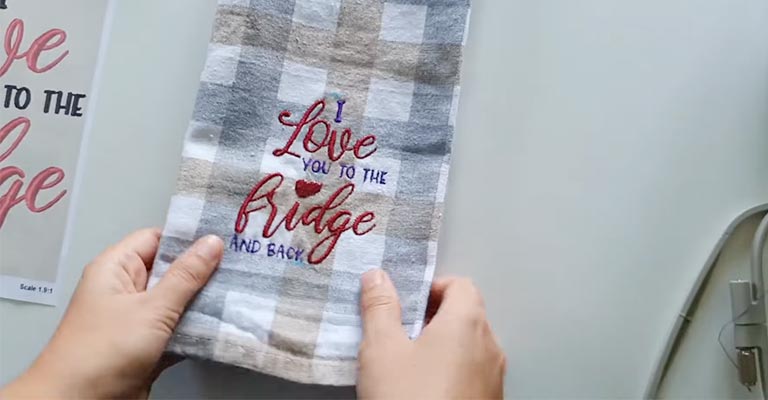
Choosing the best tea towels for embroidery is essential to achieve a successful and visually pleasing result.
The right tea towels should have the right fabric type, weave, and thread count to make embroidery work easier and more effective.
Here are some recommendations for the best tea towels for embroidery:
Natural Fabrics
Tea towels made from natural fibers, such as cotton or linen, are highly recommended for embroidery.
These materials are favored for their smooth, even texture, and they tend to be both durable and long-lasting.
Cotton offers excellent absorbency and a smooth surface for stitching, making it a popular choice for embroiderers.
Linen, on the other hand, provides an elegant and classic texture and is also a great option for embroidery.
High Thread Count
A high thread count is a key characteristic to look for in tea towels. This number represents the density of threads in the fabric, and a higher count indicates a tighter and more finely woven material.
This results in a smoother surface for your embroidery work, allowing your stitches to sit evenly and securely.
Aim for tea towels with a thread count of at least 200 for optimal results in your embroidery projects.
Plain and Light Colors
When selecting tea towels for embroidery, opt for plain and light-colored fabrics. Light colors, such as white or cream, offer a clean and neutral canvas for your embroidery, allowing your stitches and designs to stand out.
Should you desire specific colors for your project, you can easily dye or paint the fabric accordingly.
Pre-Washed and Pre-Ironed
Some tea towels come pre-washed and pre-ironed, meaning they are ready for embroidery right away.
This eliminates the need to wash and press the fabric before you begin your project, saving you time and effort.
Hemmed Edges
Tea towels with neatly hemmed edges are more convenient for embroidery. The hemming helps prevent fraying during and after your stitching.
Furthermore, it offers a polished and finished appearance to your embroidered tea towels. You can also choose to add additional decorative stitches to these edges for added flair.
Medium Weight
Tea towels of medium weight are a good choice for embroidery. They provide the necessary stability for various embroidery techniques without being too heavy. This balance makes them versatile and suitable for different types of embroidery projects.
Plain Weave
Tea towels with a plain weave are often preferred for embroidery. The simple, consistent weave provides an excellent base for many embroidery styles. The predictable surface allows for even and precise stitching.
Absorbency
Keep in mind that tea towels are practical kitchen items designed to absorb moisture. Make sure that your embroidery work does not interfere with the fabric’s absorbent qualities.
You should be able to use your embroidered tea towels for their intended purpose without sacrificing functionality.
Multipack Options
Consider purchasing tea towels in multipacks, especially if you plan to practice, experiment, or create multiple embroidered pieces.
Buying in bulk can be cost-effective and ensures you have a supply of suitable fabric for your future embroidery projects.
Environmentally Friendly
For those concerned about sustainability, look for tea towels made from organic or eco-friendly materials.
Choosing environmentally friendly options can align with your values and contribute to responsible consumption.
Popular brands that offer high-quality tea towels for embroidery include Aunt Martha’s, DMC, and Dunroven House.
However, there are many options available from various brands and manufacturers, so it’s a good idea to read reviews and consider your specific needs before making a purchase.
FAQS
What is the best fabric for embroidering tea towels?
Linen is often considered the best fabric for embroidering tea towels due to its elegant texture, absorbency, and smooth surface that makes stitching easier and more visually appealing.
Can I use dish towels for embroidery projects?
Yes, dish towels are suitable for embroidery. In fact, they are similar to tea towels and offer a practical canvas for creative embroidery designs.
Do I need to prewash linen tea towels before embroidering?
It’s advisable to prewash linen tea towels to remove any sizing and ensure they are clean. However, some tea towels come pre-washed, so check the label for instructions.
What’s the ideal thread count for dish towels used in embroidery?
For dish towels and tea towels used in embroidery, a thread count of at least 200 is recommended. This higher thread count provides a smoother surface for your stitches.
To Recap
Embroidering a tea towel is a delightful and rewarding craft. To summarize the key steps, you start by selecting a design and preparing your materials.
Then, you transfer the design, secure your tea towel, and begin embroidering, adding your personal touch with each stitch. Don’t be disheartened by initial attempts; embroidery is an art that improves with practice.
The satisfaction of creating a personalized and handmade tea towel, brimming with your creativity and care, is unparalleled. So, embrace the process, relish the journey, and watch as your kitchen decor transforms into a unique and cherished masterpiece. Happy stitching!
Leave a Reply